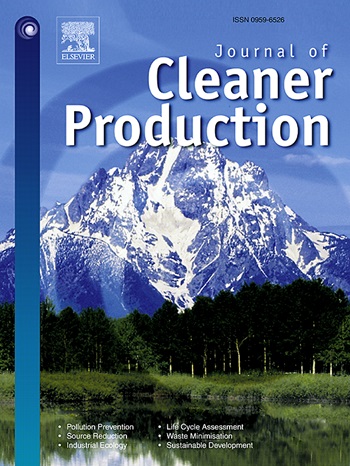Energy harvesting from natural gas Pipelines: Feasibility of thermoelectric generators as lithium battery replacements in electronic gas volume correctors
IF 10
1区 环境科学与生态学
Q1 ENGINEERING, ENVIRONMENTAL
引用次数: 0
Abstract
This study investigates the feasibility of replacing conventional lithium batteries in electronic gas volume correctors with thermoelectric modules, offering a sustainable and low-maintenance power solution for natural gas distribution systems. Field tests were conducted at a City Gate Station under both warm and cold climate conditions. In warm climates, where the ambient temperature exceeded the pipe temperature, the system achieved a maximum closed-circuit voltage of 0.31 V at a temperature difference of 3.77 °C, delivering 1.46 mW of power and 4.64 mA of current. In cold climates, with the ambient temperature lower than the pipe temperature, the system generated a maximum closed-circuit voltage of 0.25 V at a 3.6 °C temperature difference, yielding 0.94 mW of power and 3.73 mA of current. Based on these findings, a configuration comprising 72 thermoelectric modules, arranged in two series-connected sets of 36, was proposed to supply the required voltage (3.6 V) and current (over 6 mA) for gas volume correctors for more than 95 % of annual operating hours. Economic analysis revealed that the system's payback period is favorable; for instance, with a battery lifespan of 2 years, the device recovers its cost within 5 years, while a battery lifespan of 5 years necessitates an operational lifespan exceeding 15 years for economic viability. Sensitivity analysis identified average battery life, device operational lifespan, battery price, and initial manufacturing cost as the most critical factors influencing economic performance. By reducing reliance on lithium-based energy storage, this approach mitigates the environmental hazards associated with lithium battery disposal, including toxic waste and resource-intensive production, while aligning with global sustainability goals aimed at minimizing resource extraction and environmental degradation. These findings demonstrate that thermoelectric modules offer an effective, economically viable, and environmentally friendly alternative to conventional batteries in gas volume correction applications.
从天然气管道收集能量:热电发电机在电子气体体积校正器中替代锂电池的可行性
本研究探讨了用热电模块取代电子气体体积校正器中传统锂电池的可行性,为天然气分配系统提供了一种可持续的低维护电源解决方案。在温暖和寒冷的气候条件下,在城门站进行了现场试验。在温暖的气候条件下,当环境温度超过管道温度时,该系统在温差为3.77℃时实现了0.31 V的最大闭环电压,输出1.46 mW的功率和4.64 mA的电流。在寒冷气候下,当环境温度低于管道温度时,系统在3.6℃温差下产生的最大闭环电压为0.25 V,产生0.94 mW功率和3.73 mA电流。基于这些发现,提出了一种由72个热电模块组成的配置,这些热电模块分为两组,每组36个串联在一起,为气体体积校正器提供所需的电压(3.6 V)和电流(超过6 mA),年工作时间超过95%。经济分析表明,该系统的投资回收期是有利的;例如,电池寿命为2年,设备在5年内收回成本,而5年的电池寿命需要超过15年的运行寿命才能实现经济可行性。灵敏度分析发现,平均电池寿命、设备使用寿命、电池价格和初始制造成本是影响经济性能的最关键因素。通过减少对锂基储能的依赖,这种方法减轻了与锂电池处置相关的环境危害,包括有毒废物和资源密集型生产,同时与旨在减少资源开采和环境退化的全球可持续发展目标保持一致。这些发现表明,在气体体积校正应用中,热电模块为传统电池提供了一种有效、经济可行、环保的替代方案。
本文章由计算机程序翻译,如有差异,请以英文原文为准。
求助全文
约1分钟内获得全文
求助全文
来源期刊

Journal of Cleaner Production
环境科学-工程:环境
CiteScore
20.40
自引率
9.00%
发文量
4720
审稿时长
111 days
期刊介绍:
The Journal of Cleaner Production is an international, transdisciplinary journal that addresses and discusses theoretical and practical Cleaner Production, Environmental, and Sustainability issues. It aims to help societies become more sustainable by focusing on the concept of 'Cleaner Production', which aims at preventing waste production and increasing efficiencies in energy, water, resources, and human capital use. The journal serves as a platform for corporations, governments, education institutions, regions, and societies to engage in discussions and research related to Cleaner Production, environmental, and sustainability practices.
 求助内容:
求助内容: 应助结果提醒方式:
应助结果提醒方式:


